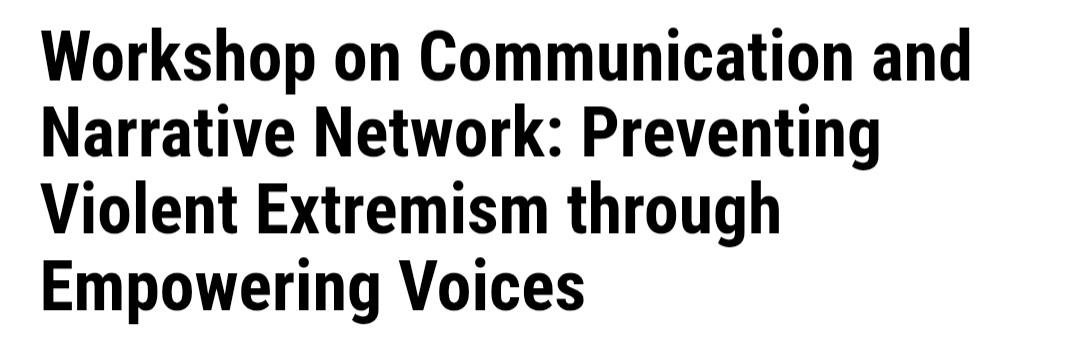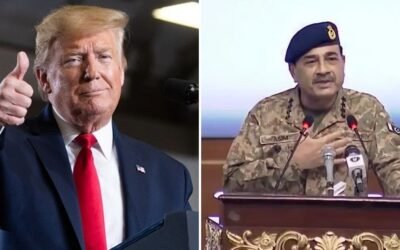Pakistan has been plagued by terrorism and extremism for decades. To root out the problem, the country has launched multiple military operations. The outcome of these campaigns has been successful. But force alone is not the answer. Hence, the country has also opted for non-kinetic measures. This involves countering propagandist media forms by terrorist groups. Such content intentionally uses history selectively to incite divisions and violence. To prevent this threat, counter-narrative labs are employed. They use creative messaging with digital tools to spread narratives of peace. These projects are not strictly labs, but rather a patchwork of multiple initiatives. Therefore, this article examines how Pakistan has utilized tech-savvy methods to counter terrorism.
🔊 ANNOUNCEMENT | Season 4 of our podcast launches tomorrow!
Join us as we speak to leading experts in this field to uncover the latest insights, research, and strategies for tackling online extremism
Press play to listen to a snippet of Episode 1 featuring @JessMarinDavis ⤵️ pic.twitter.com/zmCf8v8zuk
— Tech Against Terrorism (@techvsterrorism) January 8, 2025
What are Counter-Narrative Labs?
As aforementioned, the term lab is not to be taken in literal terms. In countering violent extremism, labs can be understood as spaces for rapid prototyping. That is, a space where experts can gather, test, and evaluate counter-narrative strategies. Activists, technologists, and researchers convene to discuss possible interventions online. International actors like Hedayah help aid in this mission. This platform has promoted counter-narrative libraries and toolkits that these labs can borrow. The lab model shifts emphasis from top-down messaging to co-created content that taps local narratives and aspirations. Having established this, the article will look at some digital counter-narrative steps taken by Pakistan.
Pakistan’s efforts reflect both strengths and limitations. Think-tanks and civil society groups have invested in national narrative networks. Think-tanks like PakPIPS have also provided digital training. This helps in better identifying extremist disinformation. PakPIPS’s purpose is to understand violent conflict from all possible angles. Only by doing so, they believe, would they be able to identify the cause. In addition, they complement this goal with skills and training activities that are designed to promote public awareness and build domestic constituencies for peace in Pakistan. However, for counter-narratives to be successful in the long term, the government needs to make sure the campaign is sustained and not merely episodic.
The Harakat-ut-Taleem Campaign
CVE campaigns were soon moving to online spaces. One case study is that of the Harakat-ut-Taleem campaign. Six short videos were launched anonymously to dissuade youth from joining terrorist networks. They contained dramatized ceremonials and targeted Pakistani audiences. The videos were in Urdu with English subtitles, so they were accessible to diaspora/Western audiences. There was evidence of sustained online engagement. The campaign illustrates that locally-idiomatic video content can outperform translated/outsourced alternatives.
You May Like To Read: IED Blast in Wana’s Rustam Abzar Area Targets Security Forces
What was particularly notable was that this campaign was not government-backed. In a way, this enhanced the legitimacy of the counter-narrative intervention. The target audience, the youth, who were looking for political and religious direction, were more likely to respond positively. Furthermore, the videos were embedded in a Pakistani context. The material had been provided by former extremists. They also participated in the video as reformed individuals, which made the message more impactful. The campaign was the most popular on Facebook, as judged by clicks.

Source: Brookings
United Nations Workshops on Preventing Violent Extremism

Source: UNODC
In April 2025, the United Nations Office on Drugs and Crime (UNODC) held a 3-day workshop. This project was undertaken in collaboration with the National Counter Terrorism Authority (NACTA) and funded by the European Union (EU). It was held under the Countering and Preventing Terrorism in Pakistan (CPTP) project. A total of 31 participants from various fields, including government, media, and academia, took part. Individuals were taught to conduct situational analysis using tools like SWOT. This allowed them to assess socio-cultural and structural factors that contribute to extremism. The sessions were led by experts who highlighted the importance of narrative building in countering terrorism. They also introduced best practices in strategic communication. This would enable them to foster a message of peace and cohesion on social media. It would also counter the growing divisions in society.
The workshop closed with notable outcomes. A one-year action plan and responsibility matrix were co-created by participants. It was tailored for the Communications and Narratives Network. This collaborative roadmap outlines priority thematic areas, assigns roles and responsibilities. Furthermore, it detailed implementation strategies to guide PVE communications work throughout the year. Most importantly, the plan highlighted locally relevant messaging for counter-narrative initiatives. Partnerships between government, civil society, and media were also highlighted as being necessary. The workshop was a key milestone in Pakistan’s efforts to counter extremism digitally.
Why Do We Need Counter-Terrorism Narratives?
Radical narratives are used to misguide and recruit individuals, particularly youth, into terrorist organizations. The youth, being especially vulnerable to extremist discourse to fall victim. In their attempt to live up to these narratives, they undertake harmful and violent actions. In most cases, they end up losing their lives. This, to them, is no big loss. They have internalized the terrorist propaganda that self-sacrifice is the route to victory. Groups like Al-Qaeda also use self-propagated narratives to gain sympathy for themselves.
One of the cases in which we can see internalization of radical narratives at work is the murder of Salman Taseer. He was a former Governor of Punjab and vocal about what he considered harsh blasphemy laws. His bodyguard, Mumtaz Qadri, offended by this mindset, murdered him in public. Qadri claimed that it was his religious duty to kill the minister. He stated that he had made up his mind to carry out the deed when he heard an inflammatory speech by a cleric at a religious gathering in Rawalpindi.
Meeting of XVIII session of the Secretariat of the Congress of the Leaders of the World and Traditional Religions, held on Sep. 17-18, 2019 at Astana, Kazakhstan, attended by Prof. Dr. Muhammad Zia ul Haq (DG-IRI) as a Pakistani Representative to promote InterFaith Dialogue. pic.twitter.com/20RhRQWagp
— Paigham-e-Pakistan Centre, IRI (@IslamicIiui) September 21, 2019
Qadri expressed no remorse and was hailed as a hero by extremist groups. The whole atmosphere showcased a disturbing reality. It was easy for radically inclined individuals to turn to violence. This is why counter-terrorism narratives are necessary. There needs to be widespread measures in place that emphasize the true teachings of Islam. Paigham-e-Pakistan, which is a fatwa that declares all terrorist action un-Islamic, is a step in this direction. Also, thousands of Pakistanis are receiving media literacy, cybersecurity, and coding training through the “Digital Pakistan” initiative. These programs are making the online world safer by educating people about the digital world. Tech-savvy people are less susceptible to manipulation.
The Way Forward
Pakistan needs to take some concrete steps in its counter-narrative campaign. Firstly, it needs to find models that prioritize community-level programming and rigorous evaluation over one-off campaigns. Secondly, some legal reforms need to be put in place. Legal policies that protect digital rights while enabling targeted action against violent content would be helpful. International guidance, for example by Hedayah, can also help. However, various research indicates the importance of localization. All anti-terrorist narrative campaigns must be steeped in Pakistan’s social fabric. The process has to be Pakistani-owned and led. Non-Pakistanis cannot generate narratives for Pakistan. They must be embedded in the values, experiences, and hopes of Pakistanis themselves. Non-Pakistanis will also lack the legitimacy to act effectively.
You May Like To Read: U.S. Designates BLA and Majeed Brigade as Foreign Terrorist Organizations
Conclusion
Pakistan has made progress in using technology to fight extremist ideologies. But lasting success will require more than short-term campaigns. Efforts must be rooted in local culture, involve communities directly. They also need to be evaluated carefully to see what truly works. Partnerships between government, civil society, and media are essential. Collaborating will enable them to create messages that people trust and believe in.
The fight against radical ideas is not just about stopping violence. It is about offering better alternatives that speak to people’s needs and values. By building strong, homegrown narratives of peace and tolerance, Pakistan can make extremist propaganda less appealing. This can protect future generations from being drawn towards violence.







